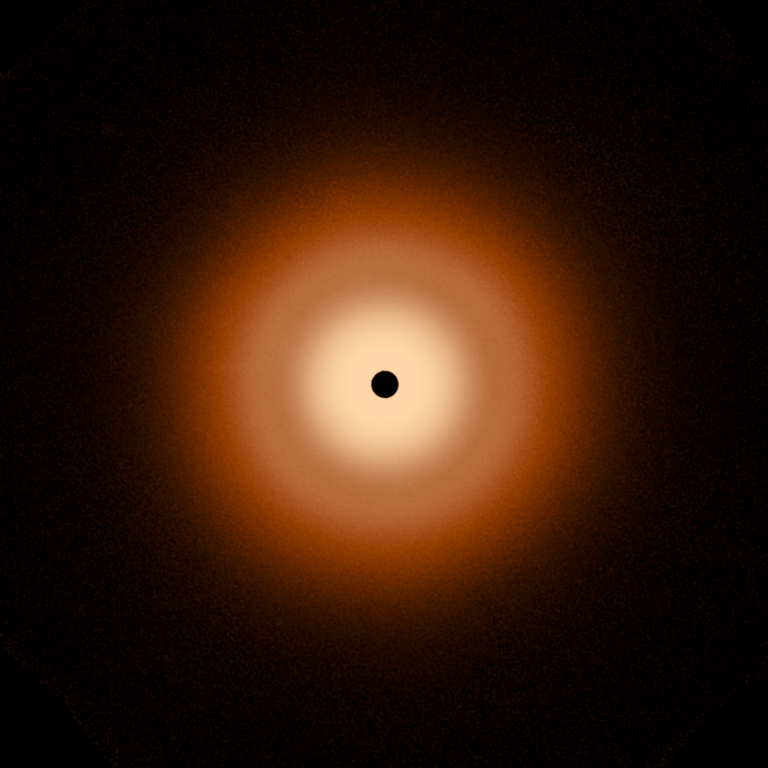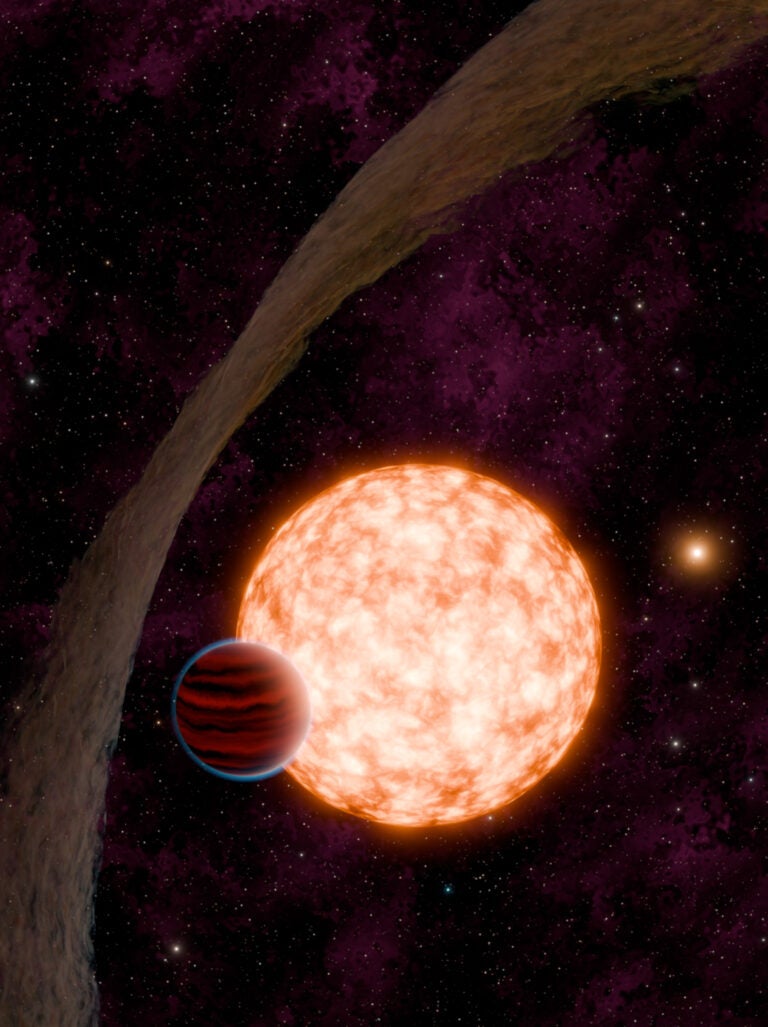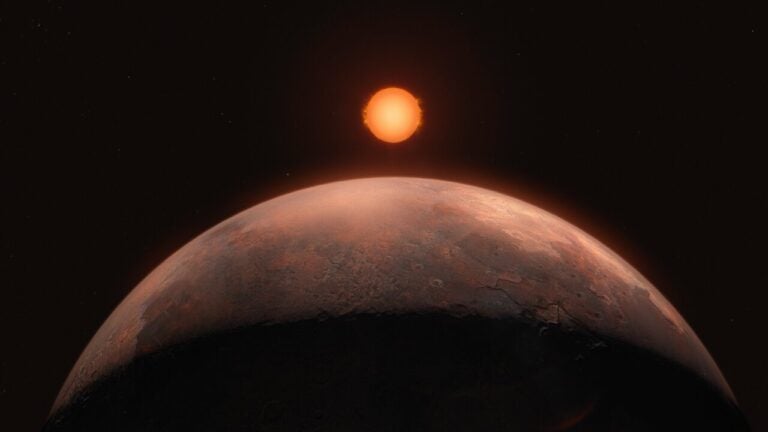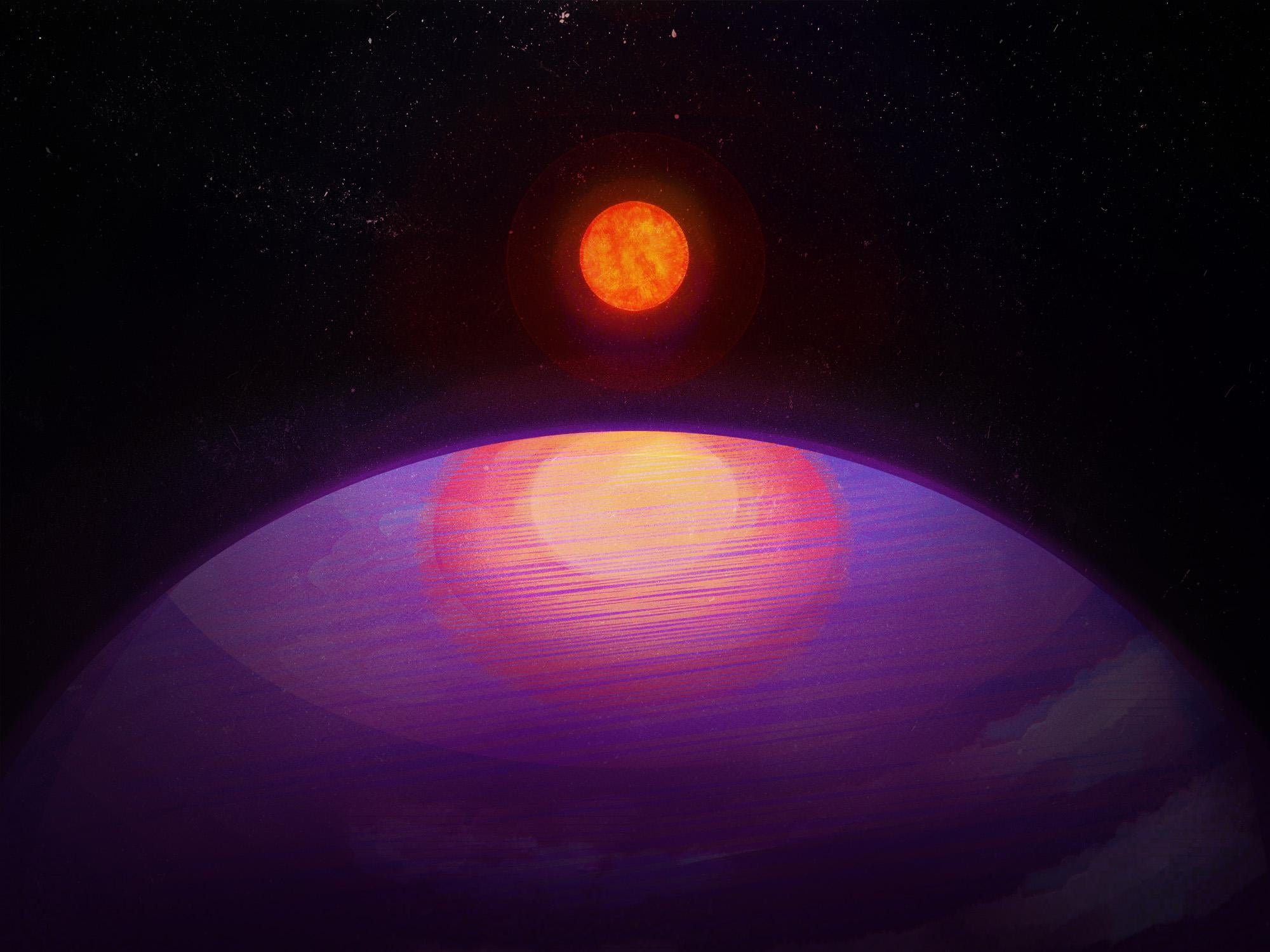
In the annals of planet hunting, astronomers’ latest find is a bit of a head-scratcher: a giant exoplanet tightly orbiting a star so tiny, it’s hard to understand how the star could have birthed it. The planet, which is named LHS 3154 b and was reported today in Science, tips the scales at 13.2 times the mass of Earth or more — putting it roughly on par with Neptune’s 17.2 Earth masses. Yet, its host star has just 11 percent the mass of the Sun.
“Previously, it was just thought that, ‘Oh, no, there’s no way the lowest-mass stars can actually form this type of planet,’” says Guðmundur Stefánsson, an astrophysicist and postdoctoral fellow at Princeton University in New Jersey and the paper’s first author. “Now at least there is a proof of concept that they can form it.”
Discovering LHS 3154 b
Stefánsson and his colleagues found the planet with the 10-meter Hobby-Eberly Telescope at McDonald Observatory in Texas as they surveyed very low-mass stars. The team had at their disposal a new near-infrared spectrograph called the Habitable-zone Planet Finder. In early 2020, they began observing the star LHS 3154, classifed as an M dwarf (the least massive spectral type of star). They soon saw hints of a periodic shift in its spectrum every 3.7 days — a telltale sign that the gravitational pull of a planet on a close-in orbit was causing the star to wobble.
“We were like, ‘OK, this is very interesting,’ and we sort of started drilling down on it even further,” says Stefánsson.
To confirm that the apparent wobble was real, the team turned to a pair of space-based observatories. With long-term brightness measurements of the star from NASA’s Transiting Exoplanet Survey Satellite (TESS), they confirmed that the signal wasn’t a false positive due to starspots or flares. And the European Space Agency’s Gaia satellite and its pinpoint-precise measurements of the star’s position over time meant the team could verify that the wobble was caused by a planet-sized body and not another star.
In the final reckoning, LHS 3154 b weighs in at 0.35 percent of the mass of its host star. That may not sound like much, but among planets that orbit their stars in less than 10 days, it’s more than twice the ratio of any other known system. (For a more familiar comparison, Jupiter is less than 0.1 percent of the Sun’s mass.)
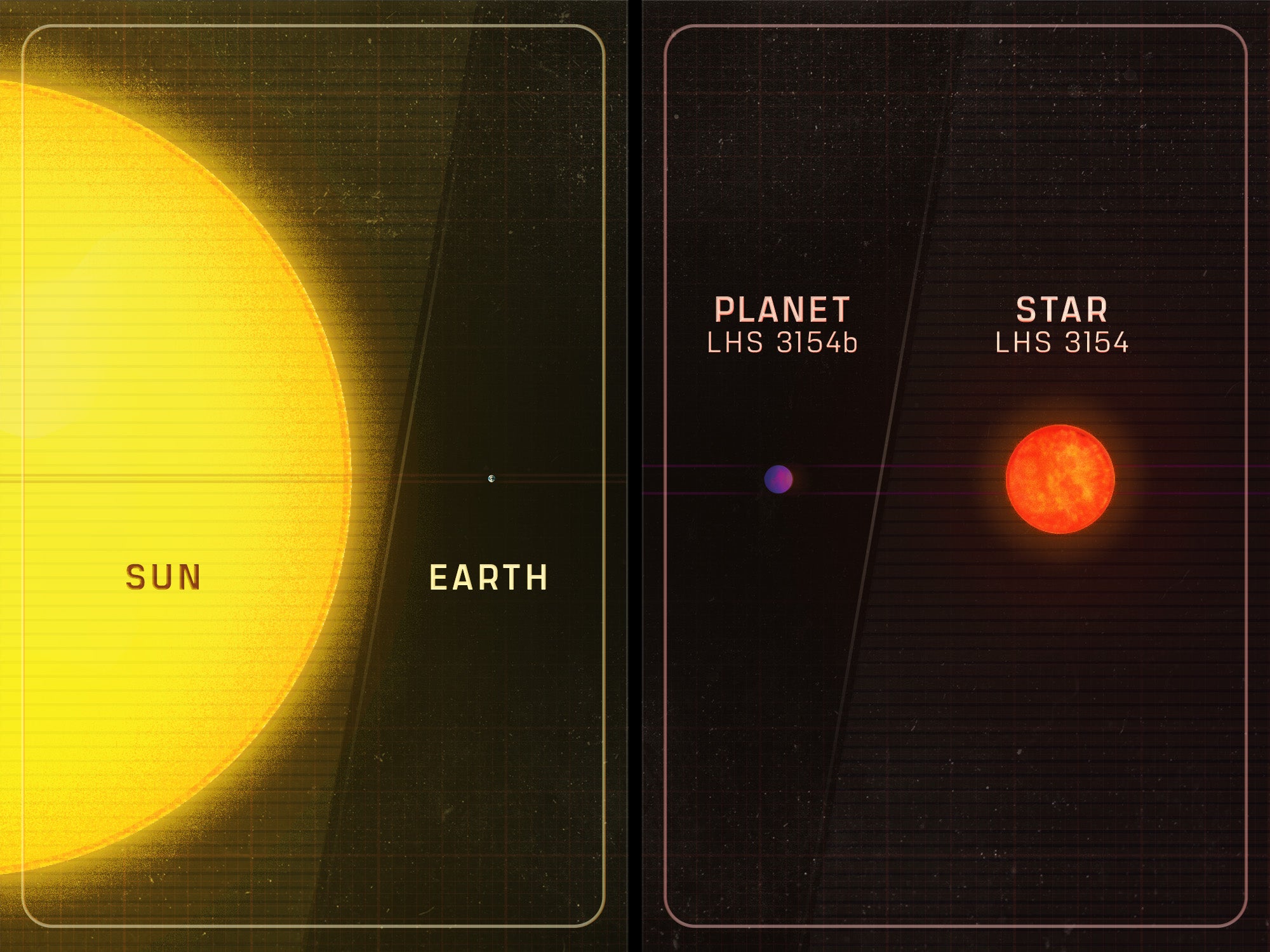
Dialing up the dust
Because planets form alongside their stars from the same disk of material, astronomers have long assumed that low-mass stars also tend to form low-mass planets. And before now, observations seemed to bear that out. Other M dwarfs known to harbor planets have an array of small rocky worlds thought to emerge when solid bits and pieces clump together to form the core of a planet. The most famous example of such a system is TRAPPIST-1, home to seven known Earth-sized planets. But LHS 3154 b “is a very different beast, where it’s one big planet instead of many smaller planets,” says Stefánsson.
There are cases of giant planets hosted by low-mass stars, but they are much larger than LHS 3154 b and orbit at much greater distances. They likely formed differently, when one clump of material collapsed under its own gravity — more like a miniature version of how a star forms.
Stefánsson says he and his colleagues briefly considered whether LHS 3154 b could have formed in a different star system, been ejected, and then captured by its current host star. But this would have almost certainly resulted in a highly elliptical orbit, not the circular orbit it has today.
This left the team initially at a loss to explain LHS 3154 b. “We were really struggling — like, we said, ‘OK, how can we actually form this type of planet?’” says Stefánsson.
To investigate, the team turned to simulations of planet formation, specially of the core-accretion scenario. They started by tuning the various model parameters to match observations of low-mass protostars. This was a dud: After 300 runs, the model failed to produce any planets larger than 10 Earth masses on a close-in orbit shorter than 10 days.
Next, the team tried playing around with the starting ingredients within the disk, varying the ratio of gas and dust. “That didn’t help change things too much,” says Stefánsson.
What did the trick was massively increasing the amount of dust in the protoplanetry disk — by a factor of 10. Making the disk denser and more compact helped too, but that didn’t produce any planets like LHS 3154 b unless the dust was dialed up in the first place. “That also sort of makes a bit of intuitive sense,” says Stefánsson. “What we’re really then doing is … increasing the available inventory of material that these types of planets can actually form out of to begin with.”
A missing mass problem
But this leads to another question: Why don’t we see all this dust in our observations? LHS 3154 is not the first system to raise the specter of a “missing mass” trend in protoplanetary disks, though it is “sort of an extreme example,” says Stefánsson.
The team has a few ideas. Maybe, as the dust accretes, it grows to centimeter sizes, which current telescopes cannot detect. Or perhaps the disks replenish themselves, pulling in dust from the much larger cloud of material that surrounds them. A third possibility is that planetary cores form more quickly than we expect, so that by the time we observe them, they have already gobbled up most of the dust in the disk. It could well be a combination of all three explanations, writes Frédéric Masset, an astronomer at Universidad Nacional Autónoma de México in Cuernavaca, in an essay accompanying the paper in Science.
In any case, when we look at images of protoplanetary disks, it seems that there is more dust — and planet-making potential — than meets the eye.







